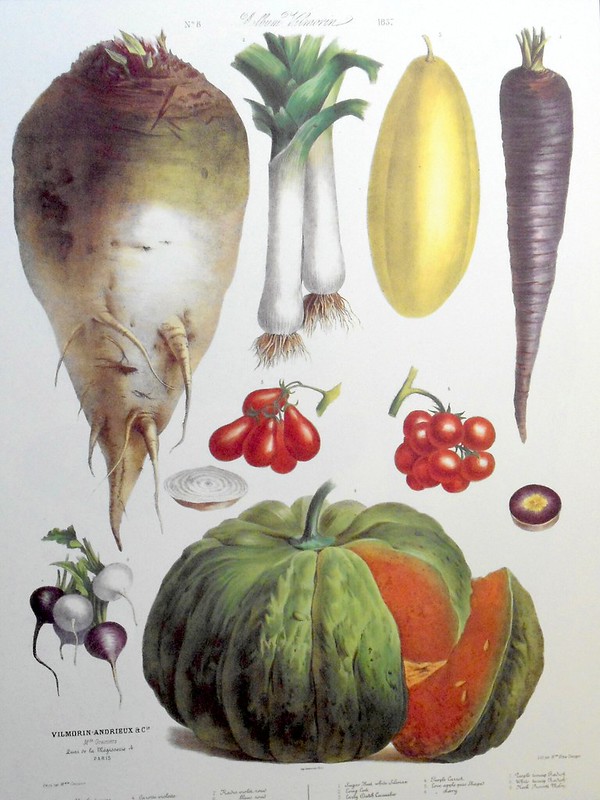
This article will show which plants can be cultivated in an aquaponic system. Before going into detail about the individual plants, however, it is important to understand which systems exist in the world of aquaponicsc, as some plants work better in system A than in system B, for example. Still others, on the other hand, have proven themselves in system B. This alone makes it clear that there is no such thing as the best system or the one system, and that when setting up or planning the design, you should pay close attention to which plants the system should be suitable for.
First of all, however, it can be said: theoretically, any plant can be cultivated in an aquaponic system. However, there are some exceptions where conventional methods work better. More on this later in the individual categories. In this article you will find a list of experiences with individual plants.
Salads and herbs
Salads and herbs are probably the group of plants that work best in aquaponics. They are usually weak growers and are well taken care of in the aquaponic system. I have personally experienced lettuces that have grown strong, thick and robust with the help of aquaponics, so that biting into a single leaf felt like biting into a juicy piece of meat. Really crunchy.
What's more, lettuces and herbs will grow in any system, whether standing in gravel (Steady Flow / Flood & Drain), in planters both on polystyrene or similar (DWC) or in PVC pipe (NFT).
Recommended varieties:
Any lettuces such as chard, spinach, lettuce, iceberg lettuce, endive, rocket, purslane and so on have proved successful as have herbs such as basil, parsley, thyme and oregano.
Not recommended:
Mint should be avoided in the aquaponic system because it is rampant. It loves humid locations and is like paradise in an aquaponic system. Should it have its own system in isolation, there should be no problems, but together with other plants it will have overgrown them in no time.
Fruit vegetables
Fruiting vegetables belong to the group of highly nutritious plants and are also very popular in the aquaponic system. However, it should be borne in mind that some fruit vegetables can grow very large. Sufficient space above and below should be provided accordingly.
Tomato plants, for example, grow enormously. I have heard of cases where the tomato plant has grown over eight (8!) metres tall. For most people, this should represent a height that either does not fit into the desired space or makes any care of the plant an impossible task. Alternatively, cocktail tomatoes or vine tomatoes can be planted, which usually remain much smaller.
Cucumbers and other squash plants grow very wide and quickly overgrow the entire space. Here, too, thought should be given in advance to whether this space is available.
Furthermore, not every system is suitable for fruiting vegetables. Neither a DWC nor an NFT system is normally capable of supporting such large plants. Theoretically, this is also possible, but it would have to be readjusted regularly with supporting measures, for example with ropes or other suspensions.
Recommended varieties:
I would recommend smaller fruiting vegetables, such as chilli plants or peppers, for private households. Smaller tomato plants, such as cocktail tomatoes, are also possible.
Not recommended:
Any cucurbits, tomatoes and other plants that grow very large should only be cultivated with caution in an aquaponic system. Due to the high nutrient content in the water, enormous results can theoretically be achieved, but practically only if there is enough space.
Root and tuberous plants
Botanically not quite correct, but certainly acceptable for understanding: I count plants that develop edible parts underground as root and tuber plants, such as potatoes, carrots, beetroot, ginger, turmeric, parsnips and the like.
Theoretically, it is also possible to cultivate these plants in an aquaponic system, but some prerequisites are necessary here.
Soft tubers, like potatoes, should not be planted in the gravel bed (Steady Flow / Flood & Drain), as the tuber would form around the gravel. This could cause enormous toothache when eaten. Instead, for soft tubers, the Aeroponics method has proved successful.
With harder tubers, such as ginger and turmeric, the gravel bed is again possible, as their strength gradually pushes the gravel away.
Recommended varieties:
Ginger and turmeric I can recommend at this point, but only if there is enough space.
Not recommended:
Potatoes, carrots and other plants with relatively soft tubers I can only recommend if the necessary conditions have been created - see Aeroponic.
Leek plants
Leeks include the edible onion, the winter onion, the spring onion, chives, garlic, leeks and many more. All of these grow excellently in the aquaponic system.
Recommended varieties:
Depending on personal taste, pick one or two from the list of leeks that can grow alongside. They are easy to care for and the upper parts of the plants can be harvested several times during the year.
Not recommended:
Although onions and other leeks go well with almost any dish, care should be taken not to grow too many.
Exotics
As described above, theoretically any plant can be cultivated in an aquaponic system, as long as the necessary conditions are met. There are cases where even the cultivation of a banana and papaya plant has been successful in a specially constructed aquaponic system.
Summary:
Theoretically, any plant can be cultivated
Salads, herbs and allium plants grow particularly well and are easy to care for.
In the case of fruiting vegetables, it should be considered in advance whether there is enough space and room for them to develop.
Root and tuberous plants are only recommended under certain conditions.
Give free rein to creativity and inventiveness
ID: 130



